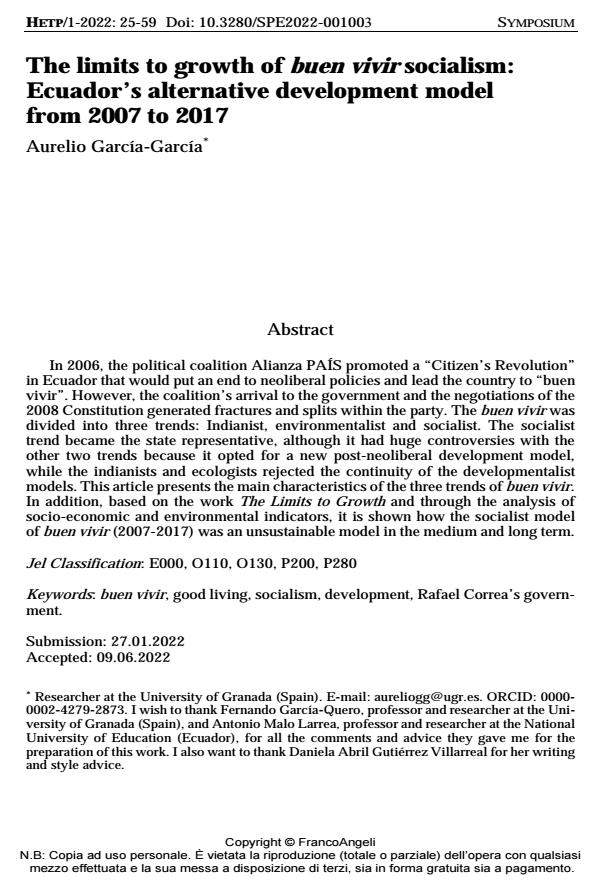The limits to growth of buen vivir socialism: Ecuador’s alternative development model from 2007 to 2017
Journal title HISTORY OF ECONOMIC THOUGHT AND POLICY
Author/s Aurelio García-García
Publishing Year 2022 Issue 2022/1
Language English Pages 35 P. 25-59 File size 252 KB
DOI 10.3280/SPE2022-001003
DOI is like a bar code for intellectual property: to have more infomation
click here
Below, you can see the article first page
If you want to buy this article in PDF format, you can do it, following the instructions to buy download credits

FrancoAngeli is member of Publishers International Linking Association, Inc (PILA), a not-for-profit association which run the CrossRef service enabling links to and from online scholarly content.
In 2006, the political coalition Alianza PAÍS promoted a "Citizen’s Revolution" in Ecuador that would put an end to neoliberal policies and lead the country to "buen vivir". However, the coalition’s arrival to the government and the negotiations of the 2008 Constitution generated fractures and splits within the party. The buen vivir was divided into three trends: Indianist, environmentalist and socialist. The socialist trend became the state representative, although it had huge controversies with the other two trends because it opted for a new post-neoliberal development model, while the indianists and ecologists rejected the continuity of the developmentalist models. This article presents the main characteristics of the three trends of buen vivir. In addition, based on the work The Limits to Growth and through the analysis of socio-economic and environmental indicators, it is shown how the socialist model of buen vivir (2007-2017) was an unsustainable model in the medium and long term.
Keywords: buen vivir, good living, socialism, development, Rafael Correa’s government.
Jel codes: E000, O110, O130, P200, P280
- Ecosocialism Salvatore Engel-Di Mauro, pp.247 (ISBN:978-3-031-74287-3)
Aurelio García-García, The limits to growth of buen vivir socialism: Ecuador’s alternative development model from 2007 to 2017 in "HISTORY OF ECONOMIC THOUGHT AND POLICY" 1/2022, pp 25-59, DOI: 10.3280/SPE2022-001003